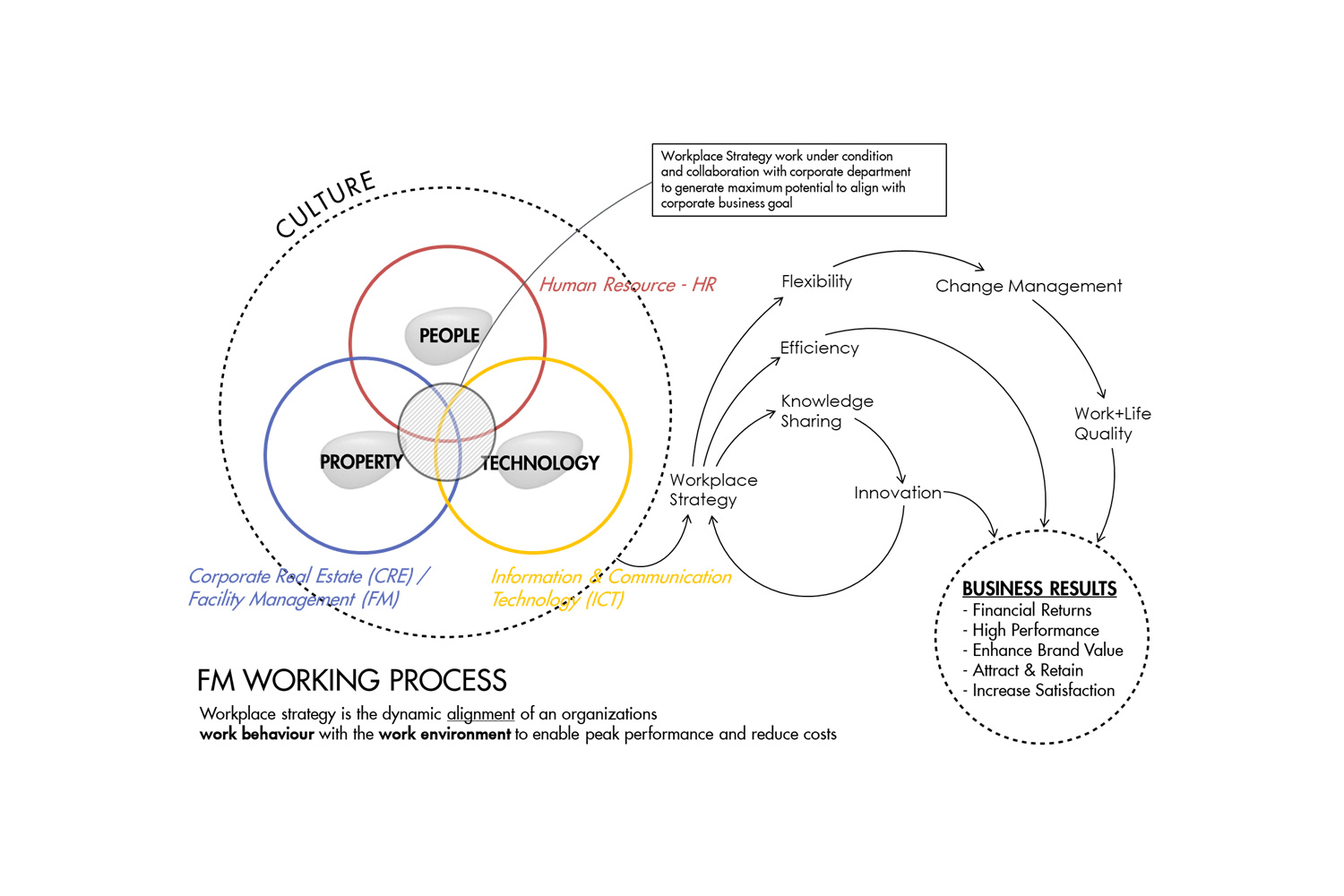
Mr. Ek Buranakul, Executive Director and Head of Workplace Strategy + Experience, Peoplespace Consulting Thailand Co., Ltd., and Knight Frank Thailand Co., Ltd.,
revealed that the changing needs concerning space usage, technologies for current and future work needs, and most importantly, the assessment of the breakeven point in the use of the workplace are all regular issues the various departments of an organisation face. However, rapid changes in technology, rising office rents, and changing working styles have resulted in a new kind of workspace. This in turn has shifted the model for calculating office space size and expenses, from the headcount method to the seat-count approach; the rule of thumb format with an average of 10 to 12 square metres per person that was used in the past is no longer applicable.
If a new office space in an organisation’s future features a co-working space to attract and retain quality personnel, sufficient meeting rooms to increase productivity, modern technology that supports employee’s work capabilities, and workplace change management that increases employee satisfaction, organisations can save over 30% of their costs per year and recoup their investment within three years.
Workplace Strategy is considered to be a relatively new career. It involves serving as a consultant to design and use workspaces to dynamically align with the organisation's work culture, surroundings, and space — for maximum efficiency and lower costs for the organisation. It also involves Facility Management (FM) and Workplace Design together, with a primary focus on business results.
The Workplace Strategist is responsible for finding, studying, and comparing workspace usage data: the area size, frequency of space use, facilities in the building, usage patterns, activities, and the changing needs of users in that area. They also must consider the number of employee changes that will occur in the future, account for cost savings, calculate the return of investment (ROI), find employee satisfaction, attract and retain quality personnel, improve productivity, enhance agile working, strengthen space performance, and implement workplace change management, etc.
The main variables that affect businesses include three factors:
- People comprise the main variable of every organisation. Businesses cannot move forward without people. However, people change with each era, from traditionalists to baby-boomers to Gen-X, followed by Gen-Y or Millennials today. People of various eras have different work attitudes, and the change of people in each era takes an average of 25.5 years.
- Property marks another variable that changes frequently and at a high cost. The working area includes economic considerations (rent, décor, breakeven point), size (big, small, sufficient space), design style, and implications for office innovations. The change of workspaces for large organisations takes an average of about 12 years.
- Technology reflects the most important variable during this period. It has developed into rapid innovation and changed the working style of "People" like never before, such as the transition from the use of manual-style notebooks to desktop computers to portable computers (laptops). Today, technological evolution has led to the smartphone, which has significantly changed the way we work, making an impact on the cycle of "People" and "Property".
Workplace Strategy Concept and Results
